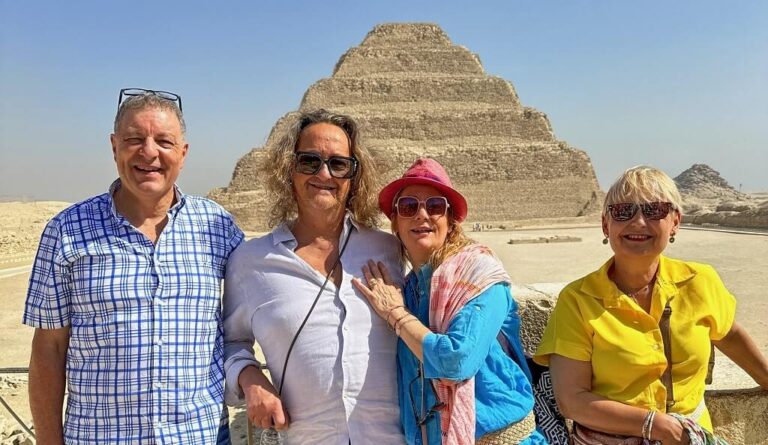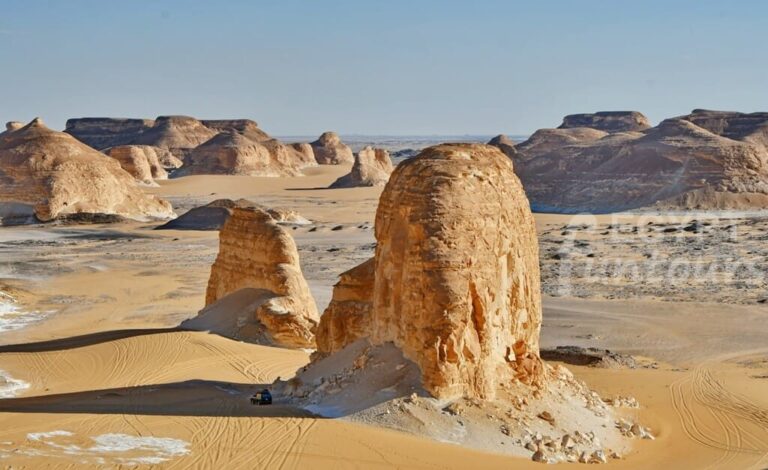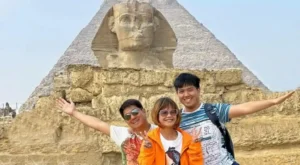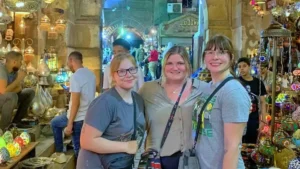Ancient Egyptian color—or iwen—was much more than paint. The ancient Egyptians used a specific, limited palette for millennia. This consistency wasn’t a failure of creativity. Instead, it was a profound philosophical commitment. The purpose of Ancient Egyptian colors was strictly utilitarian. Color was a powerful tool and one of the main elements of the ancient Egyptian Art. It ensured cosmic order (Ma’at). It secured a successful, eternal afterlife for the deceased. Every specific hue was deliberately created. It was imbued with a rich, magical function. This meant that color was the very nature of the object it painted. We will explore this sacred purpose. We will analyze the immutable color rules. Finally, we will unlock the powerful meanings that defined Ancient Egyptian colors.
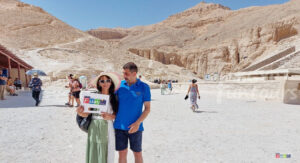
Amazing trip with Egypt Fun Tours
We had the time of our lives on a trip to Egypt and the Bahariya/White Desert with Egypt Fun Tours, too. I would highly recommend this company. They are very familiar with organizing this trip, and this means they are well-connected in the desert area. This was invaluable to us







